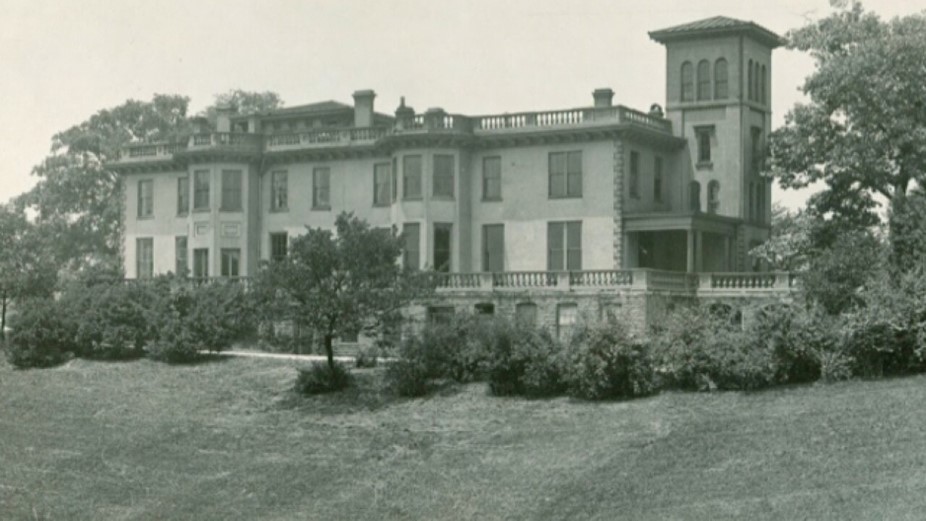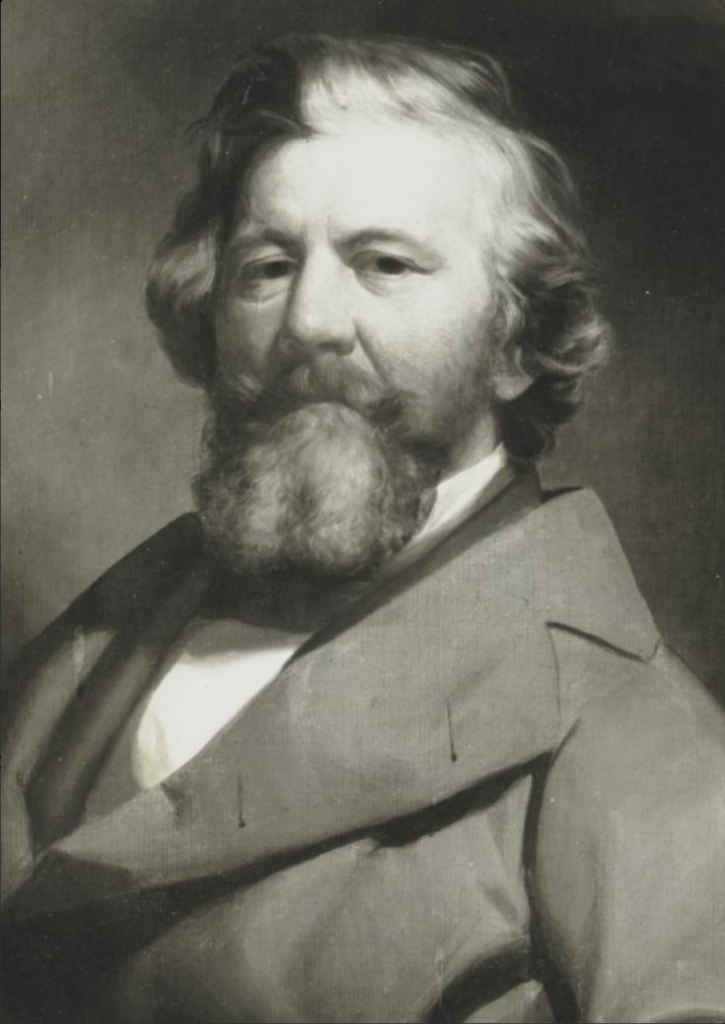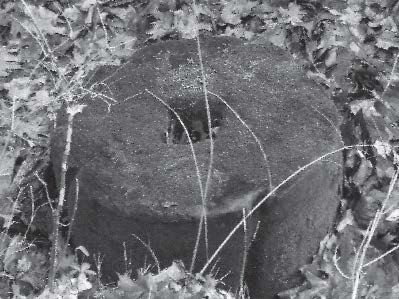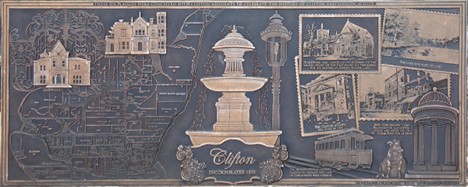By Jan Checco
This article was first published in the Summer 2022 Clifton Chronicle.
Robert Bowler (1803-1864) came to Cincinnati from Providence, Rhode Island in 1820. In 1842, he married Susan Pendleton, granddaughter of the politically powerful Judge Nathaniel Pendleton, and made his riches in dry goods and railroading. His 1845 two-story brick and stucco house – Mount Storm – featured two terraces and a porch with views of the Kentucky hills sweeping up the Mill Creek. A tower was added later.
Bowler’s landscape included shade trees from around the world and 17 greenhouses, making it like none other in the Midwest. A lovingly-tended collection of rare roses, 90 varieties of camellia, 60 begonia varieties, a collection of bananas and palm trees were splendidly complemented by seven Australian black swans gliding on small lakes. A publication of the period noted, “The entire residence was most lavishly decorated with rare plants, bright flowers and buds, exotics evergreen and smilax, the perfume of which filled the air.”
Sadly, Bowler enjoyed this paradise for only 19 years. He was struck and killed in 1864 by an urban stagecoach. His wife, their three children and grandchildren stayed on with the help of Irish laborer James Cluxton, who worked for 53 years to care for the property and helped to rear the children born at Mount Storm.
The city of Cincinnati purchased Mount Storm and its 70 acres from the Bowler family in 1912 with a promise to make it a park. The former grand home was demolished when a battle to save it was lost in 1917.







